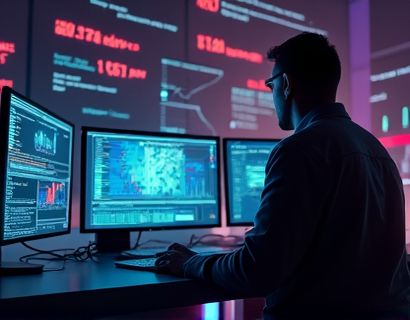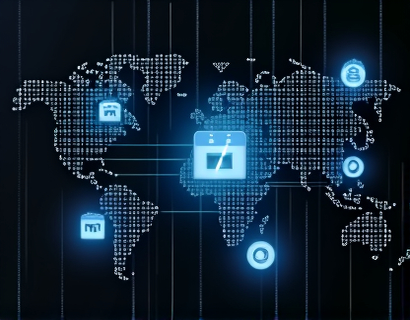Blockchain-Driven Asset Tokenization: Revolutionizing Market Accessibility and Liquidity for Real-World Assets
Blockchain technology is at the forefront of a transformative shift in asset management, enabling the seamless tokenization of real-world assets. This innovation significantly enhances liquidity and market accessibility, offering a secure and transparent platform for asset holders and investors. By integrating physical assets into the digital ecosystem, blockchain provides efficient and trustworthy solutions that streamline transactions and expand market presence.
The concept of asset tokenization involves converting tangible assets such as real estate, art, and infrastructure into digital tokens on a blockchain. These tokens represent fractional ownership or rights to the underlying asset, making it possible for a broader range of investors to participate in markets previously accessible only to a select few. This democratization of asset ownership is a pivotal development in the finance and asset management sectors.
Enhancing Liquidity through Tokenization
One of the most significant benefits of blockchain-driven asset tokenization is the enhancement of liquidity. Traditional real-world assets are often illiquid, meaning they cannot be easily bought or sold without significantly impacting their price. Tokenization addresses this issue by breaking down assets into smaller, tradable units. This process allows for more frequent and smaller transactions, reducing the barriers to entry and exit for investors.
For instance, a piece of commercial real estate valued at millions of dollars can be tokenized into thousands of smaller shares. Each share can then be bought and sold on a blockchain platform, enabling liquidity that was previously unattainable. This increased liquidity not only attracts more investors but also improves the overall efficiency of the market, as assets can be more readily valued and traded.
Improving Market Accessibility
Accessibility is another critical area where blockchain-driven asset tokenization makes a substantial impact. Historically, investing in real-world assets required substantial capital and often involved complex legal and regulatory processes. Tokenization simplifies these processes by reducing the minimum investment required and streamlining the investment workflow.
Investors can now participate in the market with a fraction of the capital needed for traditional investments. This lower barrier to entry opens up opportunities for individual investors, small businesses, and even institutional investors looking to diversify their portfolios. The result is a more inclusive market where a wider range of participants can benefit from the growth and returns of real-world assets.
Ensuring Transparency and Trust
Transparency and trust are fundamental to any financial market, and blockchain technology excels in providing these attributes. The immutable and decentralized nature of blockchain ensures that all transactions related to tokenized assets are recorded in a transparent and tamper-proof manner. This level of transparency reduces the risk of fraud and errors, building trust among market participants.
Smart contracts, self-executing contracts with the terms directly written into code, further enhance this trust. They automate and enforce the terms of asset transactions, ensuring that all parties adhere to the agreed-upon conditions. This automation not only reduces the need for intermediaries but also minimizes the potential for disputes and delays.
Case Studies and Real-World Applications
Several notable projects and platforms are already leveraging blockchain-driven asset tokenization to revolutionize the market. One prominent example is RealT, a platform that tokenizes commercial real estate. RealT allows investors to buy, sell, and trade fractions of commercial properties using digital tokens on the Ethereum blockchain. This approach has democratized access to real estate investments, traditionally dominated by large institutional investors.
Another example is Basis Capital, which focuses on tokenizing art and collectibles. By tokenizing these assets, Basis Capital enables fractional ownership, making high-value art accessible to a broader audience. This not only increases liquidity but also provides artists and collectors with new revenue streams and exposure.
Real Estate Tokenization
Real estate tokenization is one of the most advanced and widely adopted forms of asset tokenization. Platforms like RealT and Propy are leading the way in this space. These platforms allow property owners to tokenize their assets, creating liquidity and attracting a global investor base. For example, a property owner can tokenize a multi-unit apartment complex, allowing investors to purchase shares representing a fraction of the property. This model not only provides liquidity to the property owner but also offers investors a diversified and potentially high-yield investment opportunity.
Art and Collectibles
Tokenizing art and collectibles is another exciting application of blockchain technology. Platforms like SuperRare and KnownOrigin use blockchain to create unique digital tokens representing ownership of artworks and collectibles. These tokens ensure provenance and authenticity, reducing the risk of forgeries and enhancing the value of the assets. Collectors can now own fractions of rare art pieces, making these assets more accessible and liquid.
Challenges and Considerations
Despite the numerous benefits, blockchain-driven asset tokenization is not without its challenges. Regulatory uncertainty remains a significant hurdle, as different jurisdictions have varying approaches to the legal status of digital tokens and blockchain-based assets. Compliance with securities laws and anti-money laundering regulations is crucial to ensure the legitimacy and sustainability of these platforms.
Technical challenges also exist, such as scalability and interoperability. As the number of tokenized assets grows, blockchain networks must handle increasing transaction volumes efficiently. Additionally, ensuring that different blockchain platforms can work together seamlessly is essential for a cohesive and user-friendly market.
Future Prospects
The future of blockchain-driven asset tokenization looks promising, with ongoing advancements in technology and increasing regulatory clarity. As more institutions and investors recognize the potential of tokenization, the market is likely to grow exponentially. Innovations in blockchain, such as layer 2 solutions and cross-chain interoperability, will further enhance the efficiency and scalability of tokenized asset markets.
Moreover, the integration of other technologies like the Internet of Things (IoT) and artificial intelligence (AI) can add new dimensions to asset tokenization. For example, IoT can provide real-time data on the condition and usage of physical assets, while AI can offer predictive analytics to help investors make informed decisions.
Conclusion
Blockchain-driven asset tokenization is a revolutionary approach that is transforming the way real-world assets are managed and traded. By enhancing liquidity, improving market accessibility, and ensuring transparency and trust, this technology is opening up new opportunities for a wide range of investors and asset holders. As the ecosystem continues to evolve, the potential for innovation and growth remains vast, promising a more inclusive and efficient financial landscape.










































